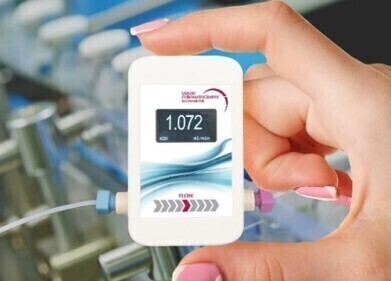HPLC, UHPLC
How Much Information Can We Gather from Mummies?
Jan 02 2017
The study of mummies began early in the nineteenth century when European travellers brought relics back to the UK and Europe. Ancient Egypt was a hotspot in the early nineteenth century thanks to Napoleon’s ill-fated attempt to conquer Egypt. His defeated soldiers returned home with tales of pyramids, relics and tombs.
One of the relics that caught the imagination of the Victorians in general were the mummies of Ancient Egypt. The preserved bodies became a source of entertainment to audiences as they were unwrapped.
A new exhibition has opened — curated by the Museum of Applied Arts and Sciences, in Sydney, Australia — dedicated to how we have unlocked the secrets of the mummies through the ages. Let’s take a brief look at how mummies have revealed their secrets.
Victorian parlour collections
Mummification was a process carried out in all corners of the globe — but it is the mummies of Egypt that we are all aware of. Hundreds of mummies were taken from Egypt — with mummies used to make paper, fuel for trains and generally treated as objects of fun rather than the final resting states of humans. Mummy unwrapping parties were a popular entertainment — but little knowledge of the Ancient Egyptians was gleaned from these parties.
By the turn of the twentieth century, a more considered approach to the mummies was taken. Anthropologists used the information gathered at unwrapping’s to estimate the mummies age at death and possible cause of death. Other researchers examined tissue samples by rehydrating them and chemists analysed the fluids used by the embalmers. But, with unease at unwrapping the mummies growing — the next big breakthrough came after the discovery of X-rays by Wilhelm Röntgen in 1895.
Seeing beneath the wrappings
X-rays allowed scientists the chance to see what was inside the bandages without unwrapping them — a kind of non-destructive testing. This allowed whole collections of mummies to be examined closely for the first time as some institutions had never allowed the unwrapping of their mummies.
X-rays revealed that some mummies were prepared with packages of organs pushed into the corpse before mummification and that metal amulets had been used beneath the wrappings to protect the body from spirits. They also revealed broken bones and the fact that embalmers fitted prosthetic body parts to ‘complete’ the corpse before mummification.
With the advent of computerised tomography in recent decades, even more progress has been made — as we create detailed virtual mummies. These allow researchers to peel away virtual bandages to reveal the body below.
In recent years, high performance liquid chromatography has been used to chemically analyse small samples. This has revealed infections that might have contributed to the person’s death and other molecules have revealed information about the environment that the person lived in. Using chromatography to uncover biological secrets is discussed in the article, The use of High Performance Liquid Chromatography (HPLC) columns in Biomolecule analysis.
Digital Edition
Chromatography Today - Buyers' Guide 2022
October 2023
In This Edition Modern & Practical Applications - Accelerating ADC Development with Mass Spectrometry - Implementing High-Resolution Ion Mobility into Peptide Mapping Workflows Chromatogr...
View all digital editions
Events
Jan 20 2025 Amsterdam, Netherlands
Feb 03 2025 Dubai, UAE
Feb 05 2025 Guangzhou, China
Mar 01 2025 Boston, MA, USA
Mar 04 2025 Berlin, Germany



.jpg)










